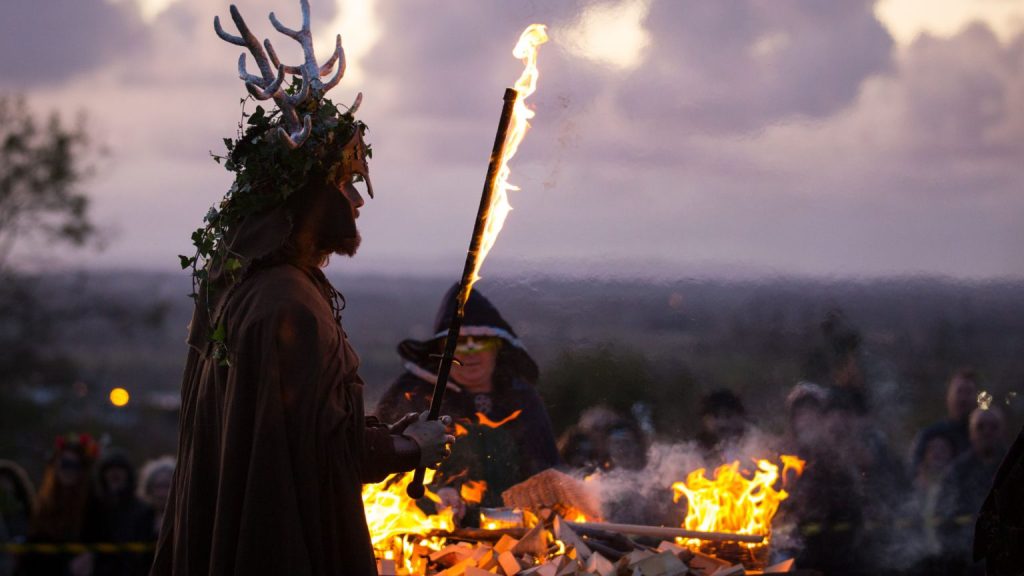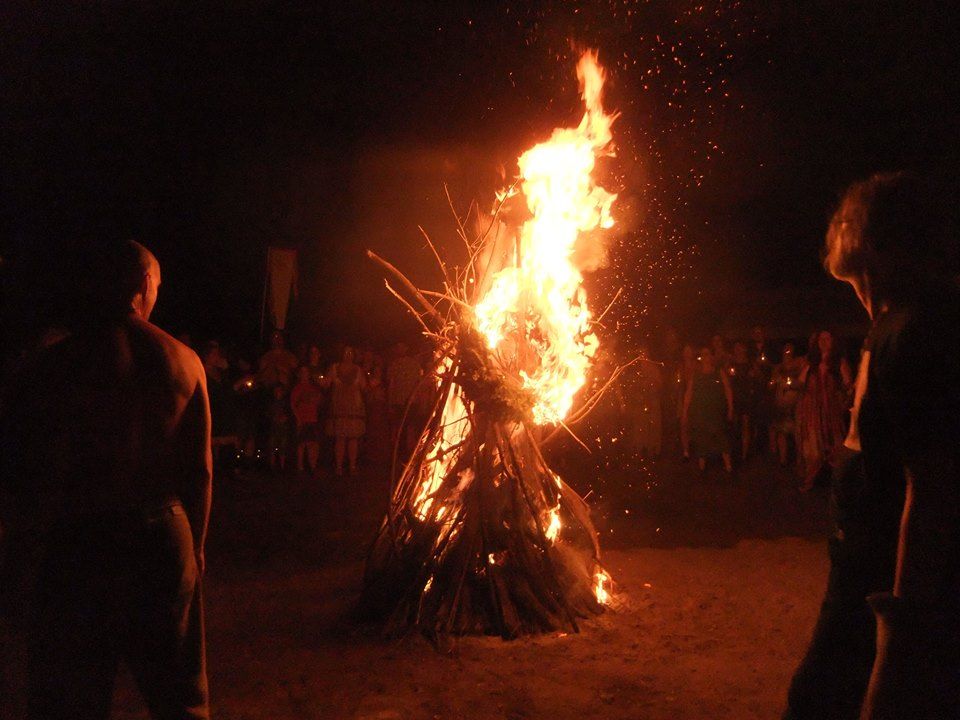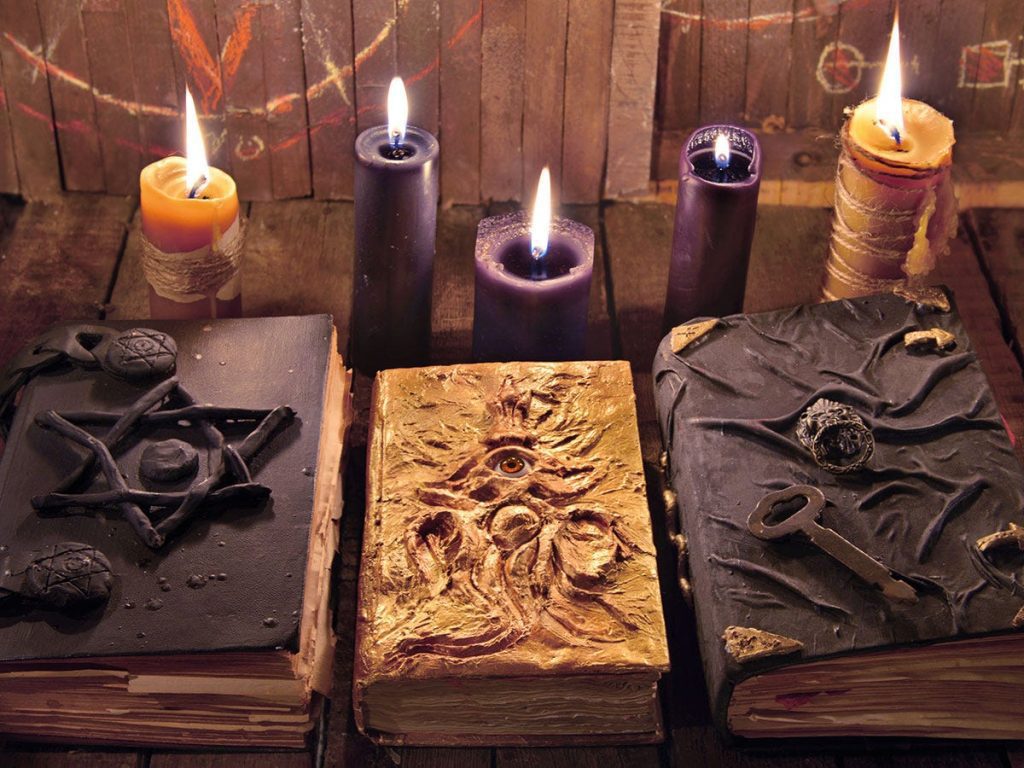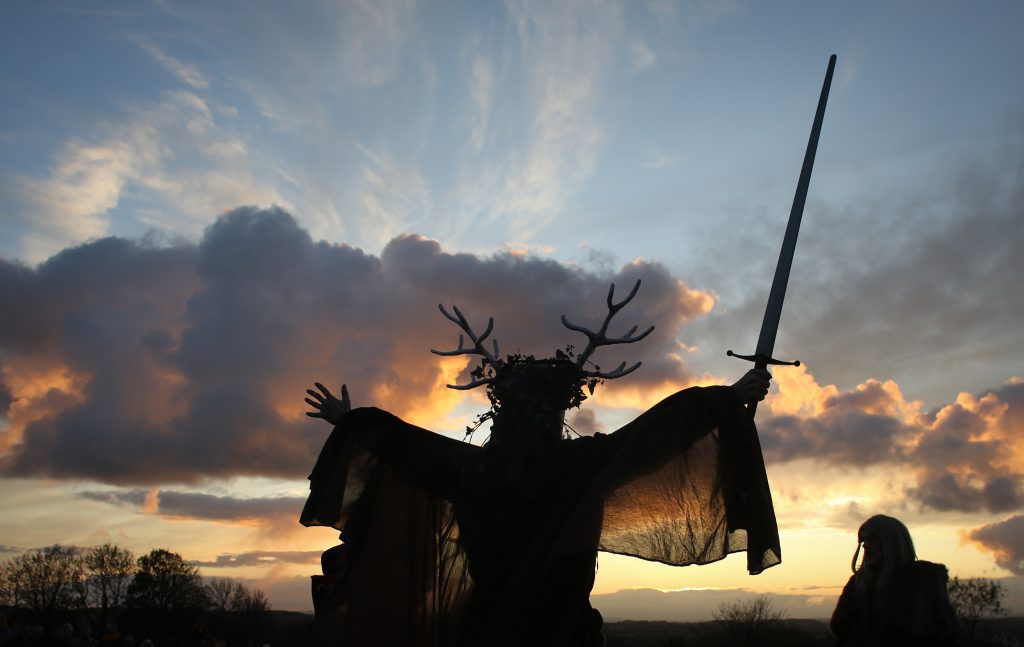In the realm of spiritual practices and belief systems, Wiccan vs Pagan is often a subject of curiosity and confusion. While these terms are occasionally used interchangeably, they represent two distinct spiritual paths with their unique histories, practices, and philosophies. Understanding the differences between Wicca and Paganism can shed light on the rich tapestry of human spirituality and foster a deeper appreciation for the diversity within these communities.
Defining: Wiccan Vs Pagan
Wiccan and Pagan are two terms often used to describe different but related spiritual or religious practices. Here’s an overview of each:
A. Wiccan
1. Historical Origins: The religion emerged in the mid-20th century and is often attributed to figures like Gerald Gardner and Doreen Valiente. Gardner is considered the father of modern Wicca and played a pivotal role in codifying its rituals and beliefs. However, it’s important to note that Wicca drew inspiration from older pagan and occult traditions, including the works of Aleister Crowley and Margaret Murray.
2. Deities and Beliefs: It typically centers around the worship of a Goddess and God, often representing the divine feminine and masculine aspects of nature. These deities may have various names and attributes depending on the Wiccan tradition. The emphasis on polarity and balance between these deities is a fundamental aspect of Wiccan belief.
3. Rituals and Practices: Wiccans engage in rituals and ceremonies that align with the cycles of nature, particularly the phases of the moon and the Wheel of the Year, which includes eight Sabbats or seasonal celebrations. These rituals often involve the casting of a circle, invoking deities, spellwork, and the use of magical tools such as athames (ritual knives) and chalices.
4. Ethics and Morality: Its ethical framework is encapsulated in the Wiccan Rede, a short poem that advises, “An it harm none, do what ye will.” This principle emphasizes responsible and non-harmful actions. Many Wiccans also adhere to the Threefold Law, which suggests that the energy one puts out into the universe will return to them threefold.
B. Pagan
1. Diversity of Traditions: Paganism is not a single, homogenous tradition but rather an umbrella term encompassing a wide range of earth-centered spiritual paths. These paths can vary significantly in their beliefs and practices. Some examples of Pagan traditions include Heathenry (Norse Paganism), Druidry, Hellenism (Greek Paganism), Asatru (Icelandic Heathenry), and many more.
2. Polytheism and Animism: A common thread among many Pagan traditions is a belief in multiple deities or spirits, often associated with natural forces, elements, or specific cultural pantheons. Animism, the belief that all things possess a spiritual essence, is also prevalent in Paganism.
3. Rituals and Practices: Pagan rituals and practices are highly diverse and can vary widely depending on the specific tradition and individual beliefs. Many Pagans celebrate seasonal festivals, such as the solstices and equinoxes, and engage in rituals that involve offerings, divination, and veneration of ancestors or deities.
4. Reconstructionism vs. Eclecticism: Some Pagans adhere to reconstructionist practices, striving to reconstruct and revive ancient pagan traditions based on historical sources and archaeological findings. Others take a more eclectic approach, blending elements from various traditions or creating their own personalized spiritual paths.
Both of these religions draw from ancient roots and share a reverence for nature and spirituality. However, they differ in their historical origins, central beliefs, rituals, and ethical principles. Wicca is a modern, structured, and dualistic pagan tradition with a focus on the worship of a Goddess and God, while Paganism encompasses a diverse array of earth-centered traditions, each with its own unique pantheon and practices. Understanding these distinctions helps individuals appreciate the breadth and depth of the pagan and Wiccan spiritual landscapes, fostering a deeper understanding of these rich traditions.


Key Differences
1. Deities and Beliefs:
- Wiccan: It typically revolves around the veneration of a Goddess and God, representing the divine feminine and masculine aspects of nature. These deities may be referred to by various names and attributes in different Wiccan traditions. The emphasis on duality and the balance between these deities is a central theme.
- Pagan: Pagan encompasses a wide spectrum of beliefs, and while some Pagan traditions may also worship specific deities, the range of deities and spirits is much broader in Paganism. Some Pagans may follow particular pantheons (e.g., Greek, Norse, Celtic), while others may have a more eclectic approach, honoring various deities, nature spirits, or ancestral spirits.
2. Structured vs. Eclectic:
- Wiccan: It is often more structured and ritualistic compared to many Pagan traditions. It has a defined set of rituals, ceremonies, and magical practices. Wiccan rituals follow specific steps, such as casting a circle, invoking deities, and performing spellwork. The Wiccan Rede and the Wheel of the Year provide a framework for ethical behavior and seasonal celebrations.
- Pagan: Pagan is a diverse umbrella term that includes a wide range of traditions, and as such, it allows for greater flexibility and eclecticism. Many Pagans craft their own rituals and practices based on personal beliefs and experiences. This diversity makes it challenging to pinpoint a single, standardized set of rituals or practices for all Pagans.
3. Ethics and Morality:
- Wiccan: The Wiccan Rede, encapsulating the principle “An it harm none, do what ye will,” serves as a fundamental ethical guideline. This emphasizes the importance of responsible and non-harmful actions. Many Wiccans also follow the Threefold Law, which suggests that the energy one puts out into the universe will return threefold.
- Pagan: While many Pagans also adhere to ethical principles, these can vary widely among different traditions and individuals. Some Pagans may follow a specific moral code based on their tradition’s teachings or cultural beliefs, while others may adopt a more individualized approach to ethics.
4. Historical Basis:
- Wiccan: It is a modern pagan tradition that draws inspiration from historical pagan practices, folklore, and ceremonial magic. It emerged in the mid-20th century and has developed its own unique rituals and beliefs while incorporating elements from various historical sources.
- Pagan: Pagan encompasses a wide range of traditions, some of which aim to reconstruct and revive ancient pagan practices based on historical records and archaeological findings. However, the historical basis can vary significantly between different Pagan traditions. Some may have well-documented historical sources to draw upon, while others rely more on contemporary interpretations of ancient beliefs.
Misconceptions About Wiccan and Pagan
Misconceptions about religions are prevalent due to misinformation, stereotypes, and cultural biases. Here are some common misconceptions about these spiritual paths:
- Satanism and Devil Worship: One of the most persistent misconceptions is the association of Wicca and Paganism with Satanism or devil worship. In reality, Wicca and Paganism have no connection to Satanism or the devil. Wiccans and Pagans do not believe in or worship the Christian concept of Satan.
- Evil or Dark Practices: Both are often portrayed as dark or malevolent due to their association with witchcraft. However, the practice of witchcraft within these traditions is not inherently evil or harmful. Wiccans and Pagans follow ethical guidelines, such as the Wiccan Rede, that promote positive and responsible magickal workings.
- Lack of Morality: Another misconception is that both of these spiritual paths lack moral values or ethical frameworks. In reality, both paths emphasize personal responsibility, respect for nature, and ethical living. The Wiccan Rede, for example, encourages practitioners to act in ways that cause no harm.
- Devil’s Pact or Bargains: There is a persistent belief that the two religions make pacts with the devil or engage in dangerous rituals. In truth, Wicca and Paganism do not involve making deals with malevolent entities. These paths focus on establishing harmonious relationships with deities, nature, and the self.
- Lack of Structure or Seriousness: Some people perceive Them as lacking structure or being whimsical and unserious. While these paths may offer more flexibility in personal practice, many practitioners follow specific traditions with rituals, ceremonies, and initiatory systems. Wiccans and Pagans approach their spirituality with sincerity and dedication.
- Animal Sacrifice: Another misconception is that their rituals involve animal sacrifices. Animal sacrifice is not a common or accepted practice in modern Wicca or most Pagan traditions. These paths emphasize reverence for all life and seek to live in harmony with nature.
- Anti-Christian or Anti-Religious Sentiments: Wiccan and Paganism are often mistakenly seen as anti-Christian or anti-religious. While some individuals may have personal grievances or conflicts with specific religious institutions, Wicca and Paganism, at their core, focus on spiritual exploration, connection with nature, and personal growth rather than being defined by opposition to other faiths.
It is important to approach Wicca and Paganism with an open mind, seeking accurate information from reliable sources and engaging in respectful dialogue to dispel misconceptions and foster understanding.


Reliable sources to learn more about Wicca and Pagan
Learning about Wicca and Paganism from reliable sources is crucial for gaining a solid understanding of these spiritual traditions. Here are some reputable sources to start your exploration:
- Books by Respected Authors:
- “Witchcraft Today” by Gerald Gardner: Gerald Gardner is often considered the founder of modern Wicca, and his writings provide insights into the early development of the tradition.
- “The Witch’s Book of Shadows” by Phyllis Curott: Phyllis Curott is a prominent Wiccan author who offers a modern perspective on witchcraft.
- “Drawing Down the Moon” by Margot Adler: Margot Adler’s book is a comprehensive exploration of contemporary Paganism and its various traditions.
- “The Spiral Dance” by Starhawk: Starhawk’s book is a classic in the field of feminist spirituality and provides a detailed introduction to Wiccan practices.
- “The Complete Idiot’s Guide to Wicca and Witchcraft” by Denise Zimmermann and Katherine Gleason: This beginner-friendly guide offers a comprehensive overview of witchcraft.
- Websites and Online Resources:
- Witchvox (The Witches’ Voice): This website serves as a hub for the Wiccan and Pagan community, providing articles, event listings, and resources for beginners and experienced practitioners alike.
- Pagan Federation International: This international organization’s website offers a wealth of information about Paganism, including articles, rituals, and a directory of local groups.
- The Wild Hunt: This news site focuses on Pagan and alternative spirituality topics and provides informative articles and insights into contemporary Paganism.
- Local Pagan and Wiccan Groups:
- Local Wiccan and Pagan groups often host workshops, classes, and gatherings. These can be excellent opportunities to learn from experienced practitioners and build a sense of community.
- Online Communities:
- Social media platforms, such as Facebook and Reddit, host numerous Wiccan and Pagan groups and forums where you can ask questions, share experiences, and connect with others on similar spiritual journeys.
- YouTube Channels and Podcasts:
- Many practitioners and teachers share their knowledge through YouTube channels and podcasts. Some well-regarded channels include “Thorn Mooney” and “The Witch of Wanderlust.”
- Academic Resources:
- Consider exploring academic works, which can provide historical, sociological, and anthropological perspectives on these traditions. University libraries and online databases can be valuable resources for scholarly articles and wiccan books.
- Local Occult and Metaphysical Bookstores:
- Visit your local metaphysical or occult bookstore, where you can find books, magazines, and resources related to these topics. Store owners and staff often have valuable knowledge and recommendations.
- Wiccan and Pagan Organizations:
- Organizations like Covenant of the Goddess (CoG) and The Pagan Federation provide resources, information, and support for individuals interested in paganism.
- When researching and learning about it, it’s essential to critically evaluate the sources and be open to diverse perspectives within these traditions. Learning from a variety of sources and engaging in respectful dialogue with experienced practitioners can deepen your understanding of these rich and diverse spiritual paths.
How to Join Wicca and Paganism
Joining Wiccan or Pagan communities and embracing these spiritual paths is a personal journey that involves self-discovery, learning, and often a degree of formal or informal participation in the community. Here are some steps to consider if you’re interested in exploring Wicca or Paganism:
- Educate Yourself: Start by reading books, articles, and online resources to gain a foundational understanding of Wicca and Paganism. There are numerous introductory books available that can help you grasp the basic principles, history, and practices of these traditions.
- Research Different Traditions: These paths encompass a wide range of traditions, each with its unique beliefs and practices. Take the time to explore various traditions, such as Gardnerian Wicca, Druidry, Hellenism, or Heathenry, to see which one resonates with you the most.
- Attend Workshops and Gatherings: Look for local groups or events in your area. Attending workshops, classes, and gatherings can provide you with opportunities to meet like-minded individuals, learn from experienced practitioners, and experience group rituals.
- Connect with Online Communities: There are numerous online forums, social media groups, and websites dedicated to Wicca and Paganism. These platforms can be valuable for connecting with a broader community, asking questions, and seeking advice.
- Meditation and Self-Reflection: Many believers incorporate meditation and self-reflection into their practices. These activities can help you develop a deeper connection with your spirituality and clarify your beliefs and goals.
- Respect for Nature: Both Wicca and Paganism often emphasize a reverence for nature. Spend time in natural settings, whether it’s a park, forest, or beach, to connect with the natural world and draw inspiration from it.
- Create an Altar or Sacred Space: Setting up a personal altar or sacred space can be a meaningful part of your practice. It can serve as a focal point for meditation, ritual work, and reflection. Your altar can be as simple or elaborate as you like and can include items that hold personal significance.
- Celebrate the Seasons: Many Wiccans and Pagans celebrate the changing of the seasons through rituals and festivals. Explore the Wheel of the Year and consider how you can incorporate seasonal celebrations into your practice.
- Seek a Mentor or Teacher: If you feel ready, you can seek out a mentor or teacher within the tradition you’re interested in. However, finding a reputable and experienced teacher can take time and effort.
- Respect Cultural Appropriation: Be mindful of cultural appropriation, which involves borrowing elements from other cultures without understanding or respecting their significance. Ensure that your practices are culturally sensitive and respectful.
- Personalize Your Practice: Your spiritual path is a personal journey. Feel free to adapt and personalize your practice to align with your beliefs and experiences. Many Wiccans and Pagans practice eclectic forms of their traditions.
- Be Patient and Open-Minded: Remember that spiritual growth is a lifelong journey, and it’s okay to have questions and uncertainties along the way. Keep an open mind and be patient with yourself as you explore and develop your beliefs and practices.
Joining Wiccan or Pagan communities can be a deeply fulfilling and enriching experience, offering opportunities for personal growth, self-discovery, and connection with nature and the divine. Approach your journey with an open heart and a willingness to learn, and you’ll find a welcoming community ready to support you on your path.


you may like to read: Harnessing the Power of Crystals in Wicca
Conclusion
While both Wicca and Paganism share a reverence for nature and a spiritual connection to the cosmos, they represent distinct paths within the broader world of spirituality. Wicca, with its focus on duality, ethical principles, and ritual structure, stands as a modern synthesis of ancient pagan elements. Paganism, encompassing a vast array of traditions, honors the diversity of belief systems and practices that have emerged throughout history.
By understanding the differences between Wicca and Paganism, we can appreciate the rich tapestry of human spiritual expression and gain insights into the various ways individuals seek connection, meaning, and harmony with the world around them. Whether drawn to the structure of Wicca or the diversity of Paganism, practitioners find their own unique paths to the sacred and the divine.


Pingback: Wiccan vs Pagan: Exploring the Big Distinctions...